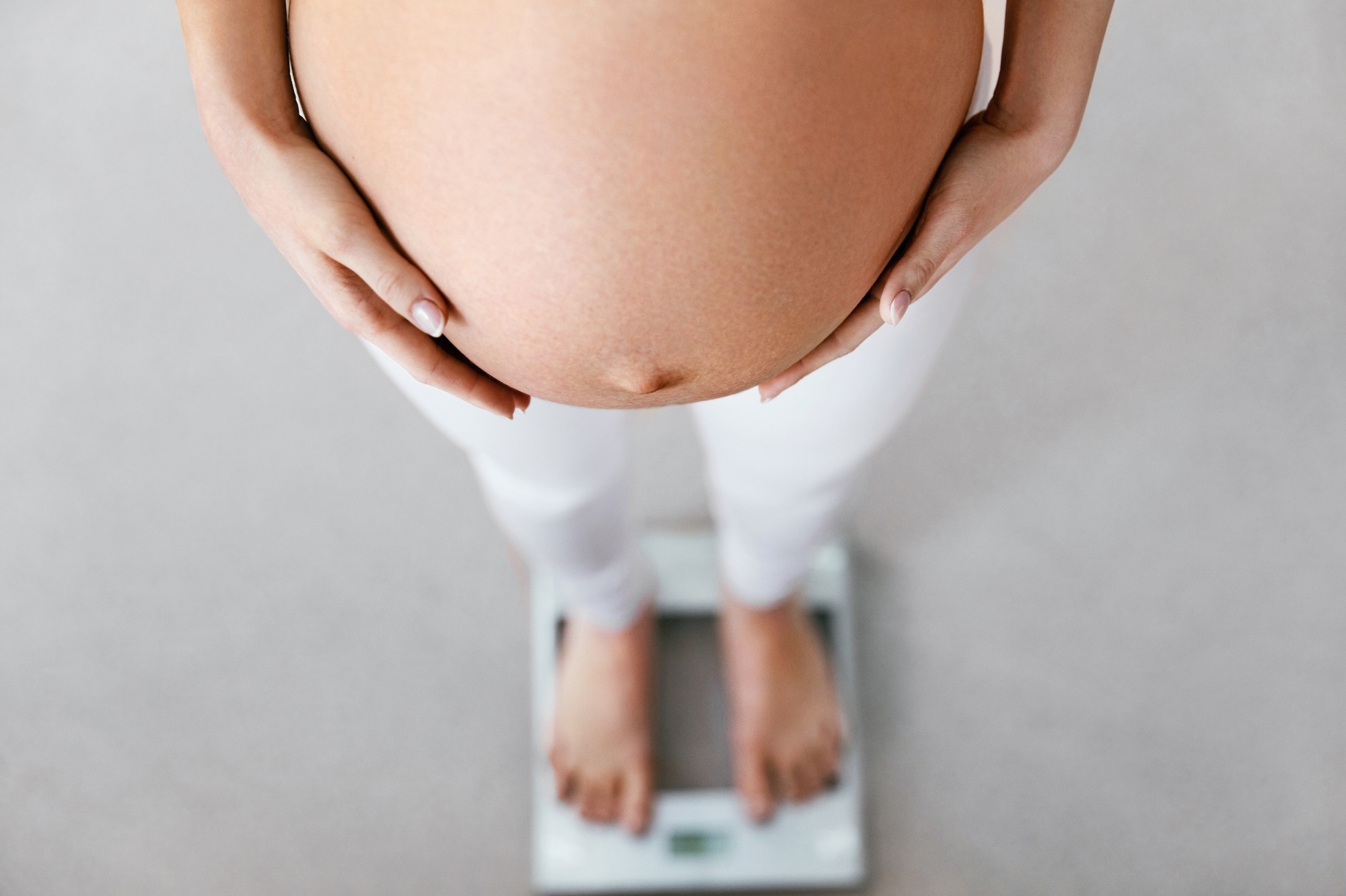Pandemic pounds: Study reveals COVID-19's impact on pregnancy weight gain patterns
In a recent study published in JAMA Network Open, researchers evaluate coronavirus disease 2019 (COVID-19)-associated changes in gestational weight gain (GWG) patterns by the timing of conception and delivery.
 Study: Trends in Gestational Weight Gain in Louisiana, March 2019 to March 2022. Image Credit: puhhha / Shutterstock.com
Study: Trends in Gestational Weight Gain in Louisiana, March 2019 to March 2022. Image Credit: puhhha / Shutterstock.com
Background
Weight gain during pregnancy is crucial for both maternal and neonatal health. Most pregnant women acquire too much weight, which can have negative repercussions, including an increased risk of cardiovascular disease.
The COVID-19 pandemic led to the widespread implementation of social distance measures, in addition to medical centers implementing protocols to minimize the spread of the severe acute respiratory syndrome coronavirus 2 (SARS-CoV-2). As a result, several individuals reported increased inactive time, adverse changes in eating habits, and worsened anxiety and sadness.
The pandemic had both direct and indirect consequences on the daily lives of pregnant women, such as increased depression, fewer prenatal and postpartum visits, and a rise in early pregnancy outcomes. The average GWG also rose during the COVID-19 pandemic; however, it remains unclear whether these altered pregnancy-related outcomes have reverted to pre-pandemic levels.
About the study
Researchers examined GWG direction and consistency by conception and delivery in annual increments during the first and second COVID-19 waves. Any changes in GWG in individuals who had pregnancies before and during COVID-19 were also determined.
To this end, birth certificates and delivery-related records were retrospectively reviewed between 2019 and 2022. Electronic medical records were obtained from a large Louisiana maternity care hospital.
The study included all women between 12 and 50 years of age who delivered babies between March 2019 and March 2022. Information was analyzed between October 2022 and July 2023.
The study exposures were delivery dates and conception in the pre-pandemic period between March 2019 and March 2020, during the peak of the COVID-19 pandemic between March 2020 and March 2021, as well as the late COVID-19 period between March 2021 and March 2022.
According to the Institute of Medicine guidelines published in 2009, GWG, defined as total GWG from the estimated conception date to the delivery date, was the primary study outcome. Log-linear-type regression models and generalized estimating equations (GEEs) were used for the analysis, and adjusted odds ratios (aORs) were determined.
Some of the covariates that were adjusted for in the analysis included age of the pregnant woman, educational status, participant-documented ethnicity and race, marital status, insurance type, job status, parity, alcohol use, and smoking habits.
Study findings
Of the 23,012 deliveries included in the analysis, 51% were among white women and 38% among black women. The mean maternal age was 29 years, whereas the mean pre-pregnancy weight was 75 kg.
About 42% of individuals gained more weight than recommended during the period preceding the COVID-19 pandemic. Comparatively, 45% and 44% of women exceeded recommended GWG levels during the COVID-19 peak and late COVID-19 period, respectively.
As compared to women who delivered before the start of the pandemic, women gained more weight during gestation when they delivered during the peak of the COVID-19 pandemic or late pandemic period.
Defining cohorts by the date of conception, women who conceived before the pandemic but delivered after the COVID-19 pandemic began had higher GWG than women whose pregnancy period was completed before the pandemic. GWG was lower among pregnancies conceived after the start of the COVID-19 pandemic and during the late COVID-19 period; however, many of these women began pregnancy with a slightly higher weight.
Examining the mean GWG by month indicated a minor drop during March 2020 and an increase in mean GWG in the subsequent year. Women with two pregnancies were more likely to gain more weight than the recommended levels during the late pregnancy period in comparison to their pre-COVID-19 pregnancy; however, this relationship weakened after covariate adjustment.
Conclusions
In deliveries during the later phase of COVID-19, an increase in GWG was similar to pre-pandemic levels; however, many women began their pregnancies at heavier weights than those recorded before the start of the pandemic.
The study findings indicate that GWG plateaued during the later stages of the pandemic. Changes in pre-pregnancy weight and GWG were among the alterations associated with the COVID-19 pandemic, with individuals who were overweight or obese being the most affected.
- Harville, E. W., Kracht, C. L., Cohen, N. L., et al. (2023). Trends in Gestational Weight Gain in Louisiana, March 2019 to March 2022. JAMA Network Open 6(8). doi:10.1001/jamanetworkopen.2023.31277
Posted in: Child Health News | Medical Science News | Medical Research News | Medical Condition News | Women's Health News | Disease/Infection News | Healthcare News
Tags: Alcohol, Anxiety, Cardiovascular Disease, Conception, Coronavirus, Coronavirus Disease COVID-19, Depression, Electronic Medical Records, Hospital, Medicine, Pandemic, Pregnancy, Prenatal, Respiratory, SARS, SARS-CoV-2, Severe Acute Respiratory, Severe Acute Respiratory Syndrome, Smoking, Syndrome

Written by
Pooja Toshniwal Paharia
Dr. based clinical-radiological diagnosis and management of oral lesions and conditions and associated maxillofacial disorders.


